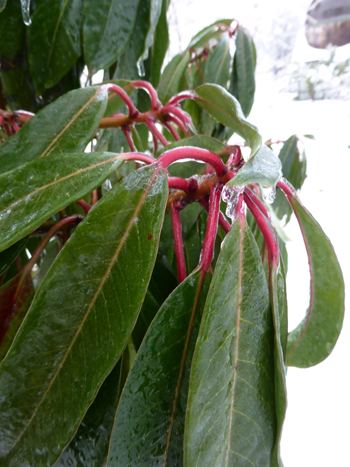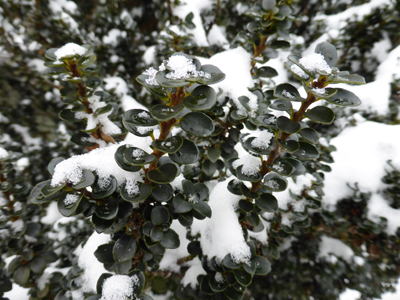Plants of the Week: March 3
 Martin Bank, covered in a carpet of yellow Eranthis hyemalis, is one of the most anticipated moments of late winter. The determined tubers open on sunny days (before crocus) sometimes as early as February. Native from southern France to Bulgaria, winter aconite self-sow and naturalize with abandon when happy. Other attributes include deer resistance and tolerance for sharing space with Juglans nigra, the black walnut. Choice and unusual Eranthis cultivars exist, though locating sources may prove challenging. Photo credit: J. Coceano
Martin Bank, covered in a carpet of yellow Eranthis hyemalis, is one of the most anticipated moments of late winter. The determined tubers open on sunny days (before crocus) sometimes as early as February. Native from southern France to Bulgaria, winter aconite self-sow and naturalize with abandon when happy. Other attributes include deer resistance and tolerance for sharing space with Juglans nigra, the black walnut. Choice and unusual Eranthis cultivars exist, though locating sources may prove challenging. Photo credit: J. Coceano
Garden location: Martin Bank, Terry Shane Teaching Garden
Ilex crenata ‘Dwarf Pagoda’ has survived the 2013-2014 winter unblemished, a rare feat when many evergreens suffered as a result of numerous consecutive days below freezing. The Japanese boxleaf holly is a slow growing Ilex perhaps best known for its tight tiny foliage, averaging 2” of growth per season. It lends an extremely fine and delicate texture to the landscape composition. ‘Dwarf Pagoda’ is a relatively low maintenance shrub, and usually looks best without pruning, allowing its asymmetrical form to develop unrestrained. Photo credit: J. Coceano
Garden location: Worth Bond Quad, seasonal containers in the Entrance Garden
 Daphniphyllum macropodum has shown a range of responses to this season’s exceptionally cold winter. Response has ranged from complete browning of foliage to no discernable damage. It is suspected that the provenance of seed, or place of origin, is responsible for the varying effects. Daphniphyllum are notoriously difficult to grow from cuttings, a fact lamented by propagators who wish to select for the bright red to pink leaf petioles. The evergreen shrub readily germinates from seed. Photo credit: J. Coceano
Daphniphyllum macropodum has shown a range of responses to this season’s exceptionally cold winter. Response has ranged from complete browning of foliage to no discernable damage. It is suspected that the provenance of seed, or place of origin, is responsible for the varying effects. Daphniphyllum are notoriously difficult to grow from cuttings, a fact lamented by propagators who wish to select for the bright red to pink leaf petioles. The evergreen shrub readily germinates from seed. Photo credit: J. Coceano
Garden Location: Plantings throughout campus: Terry Shane Teaching Garden, Alice Paul Dormitory, Sproul Observatory






No Comments